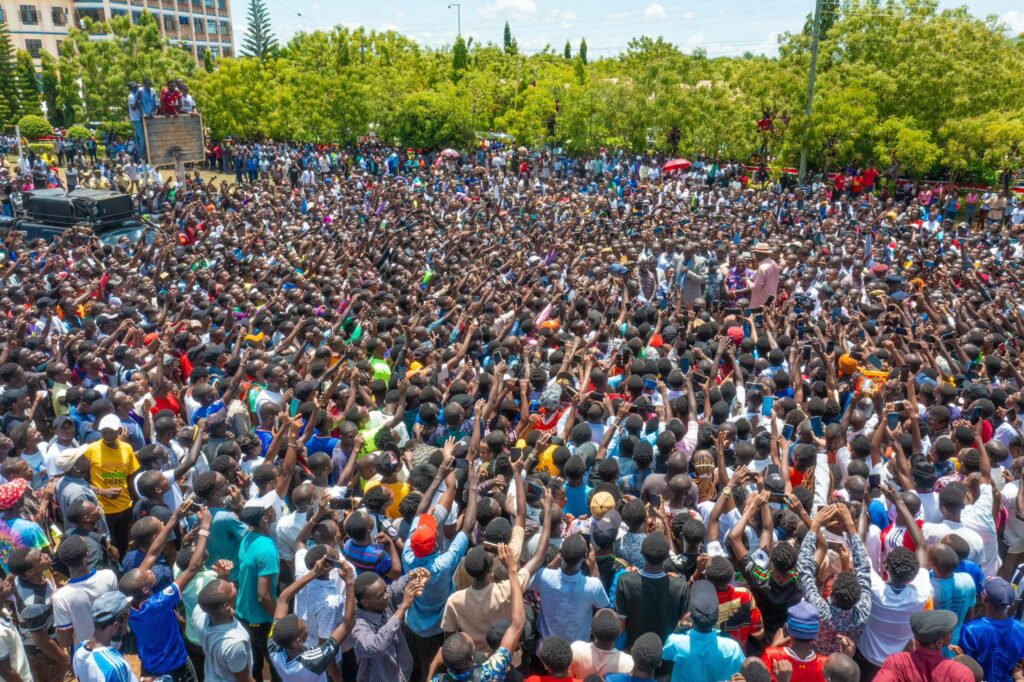President William Ruto’s five-day tour of the Mount Kenya region marked a significant moment in Kenya’s political calendar. Defying expectations of hostility in a region perceived to be disenchanted following the political downfall of former Deputy President Rigathi Gachagua, Ruto received a warm and enthusiastic welcome, reinforcing his status as the head of state and a shrewd political operator. Starting his tour in Laikipia County, the President signaled his unshaken commitment to development and unity amid deepening political rifts within the region.
The decision to begin the tour in Laikipia—where the so-called “Nyahururu Declaration” had earlier shifted regional political support toward Deputy President Kithure Kindiki—was both strategic and symbolic. It sent a message that Ruto is unfazed by the ongoing factional realignments within his ruling coalition. During his public addresses, Ruto maintained a composed demeanor, emphasizing that his administration’s focus remains firmly on service delivery, not political theatrics.
In Rumuruti, Laikipia West, President Ruto launched a series of development projects, reinforcing his administration’s presence on the ground. He inaugurated a new tuition block at Ng’arachi Comprehensive School and flagged off the Last Mile Electricity Connectivity Project, aimed at reaching over 9,000 households. These initiatives are part of a broader Sh1.12 billion investment to spur rural electrification and improve education infrastructure in the region. Such moves directly respond to long-standing demands by residents for government attention to underserved areas.
Despite mounting criticism from Gachagua’s camp, Ruto has not shied away from confronting dissent. He challenged his critics to focus on delivering for the people rather than fixating on his political standing. “If you intend to compete, first find your own agenda,” he said, calling on the electorate to judge leaders based on performance rather than rhetoric. His message was clear: development, not division, will drive the political conversation heading into the 2027 general election.
Ruto was flanked by powerful allies including DP Kindiki, Majority Leader Kimani Ichung’wah, and Governors Joshua Irungu and Cecily Mbarire, signaling unity within the top echelons of government. Their presence alongside the President demonstrated that, despite internal wrangles, the government machinery remains aligned behind Ruto’s leadership. The President’s tour was also marked by gestures to uplift the common mwananchi, such as delivering a school bus to Dr. Wachira Secondary School and providing car wash machines to boda boda operators.
Security, a persistent issue in Laikipia and parts of Baringo, also featured prominently in Ruto’s agenda. He praised the improved security situation, noting that over 40 previously closed schools had resumed operations. He instructed Interior officials to fast-track the reconstruction of nine vandalized schools and pledged further investments in public safety. The President further committed to building roads and replacing underperforming contractors, demonstrating an unyielding resolve to improve infrastructure.

The political reception Ruto received in Mt. Kenya—where Gachagua’s allies had forecasted unrest—was unexpectedly warm. Residents chose to welcome their President instead of echoing political bitterness, illustrating a shift toward political maturity. While some supporters hailed the reception as proof of Ruto’s enduring appeal, others interpreted it as a tactical retreat from overt hostility. Nonetheless, it signaled that political agitation alone may not overturn public perception without tangible alternative leadership.
Kirinyaga Governor Anne Waiguru was quick to capitalize on the positive reception, dismissing claims that Ruto’s influence in the region had waned. Speaking at the launch of a Goat A.I. Center in Mwea, Waiguru argued that the President’s developmental agenda still resonates with the people. She underscored that the road to 2027 would be built on performance, not posturing. “Let’s keep supporting and working with President Ruto for the sake of development,” she stated.
The tour was not only about development; it also served as a platform to reposition Ruto as the undisputed political leader in a region that gave him 3.5 million votes in 2022. It was a show of political might coupled with development projects, asserting control over a restive base while avoiding direct confrontation with dissenters. The deliberate inclusion of local leaders and visible project launches further amplified his presence and agenda.
Ultimately, President Ruto’s Mt. Kenya tour was a calculated political and developmental maneuver. By confronting discontent with service delivery and appealing to voter rationality over emotional loyalties, he reaffirmed his centrality in Kenya’s political landscape. Whether this strategy will fully neutralize emerging opposition within his own base remains to be seen—but in the immediate term, it showed a President who remains politically grounded, development-focused, and unafraid to wade into contested territory.










